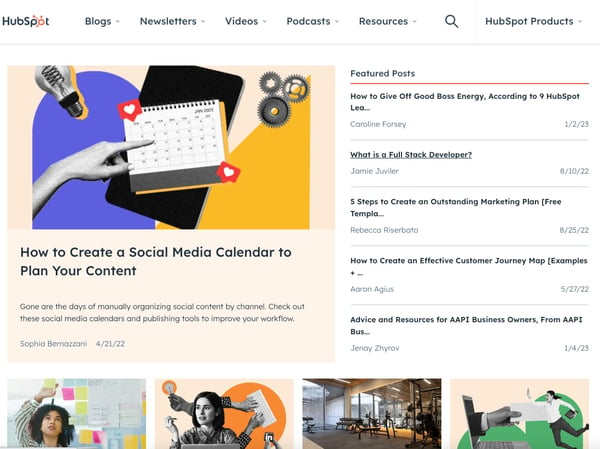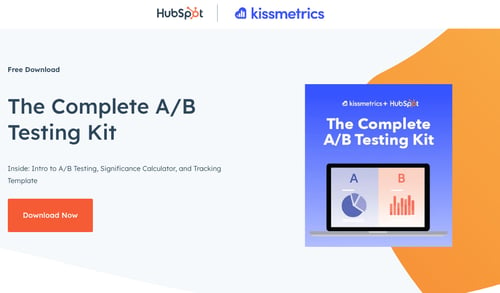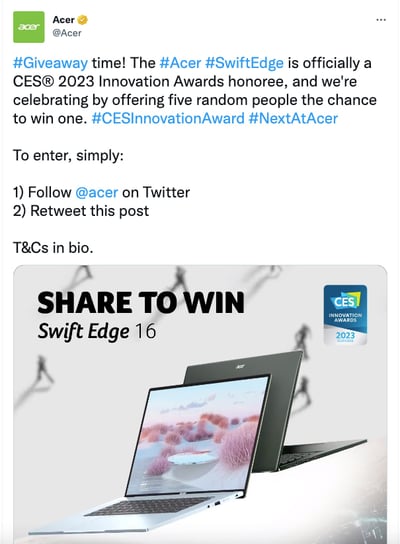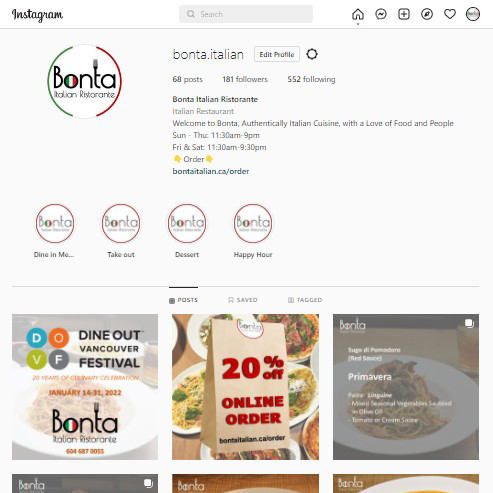Marketing Without a Budget? Use These 10 Tactics [Expert Tips]
With a recession looming, many brands are tightening up their budgets, and often, marketing is one of the first ones to go.
If you’re marketing without a budget, find below some free marketing strategies with high ROI. Plus, get some advice from HubSpot marketers who specialize in working with startups.
Below, let’s review the top tactics to implement when you’re marketing without a budget.
- Develop a content marketing strategy.
- Seek out co-marketing opportunities.
- Invest in your social media presence.
- Increase community engagement.
- Offer free trials or free resources.
- Arrange giveaways.
- Encourage user-generated content.
- Host a webinar.
- Invest in SEO.
- List your company on business directories.
1. Develop a content marketing strategy.
Looking for sustainable growth at a low cost? Content marketing is the way to go, according to Janelle Apaydin, head of marketing at HubSpot for Startups.
“A strong content marketing strategy allows you to educate your customers and keep your business top of mind while increasing organic search volume over time,” she says.
Don’t know where to start? Consider videos – specifically short-form videos.
Short-form video is currently used by roughly 33% of marketers surveyed in our 2023 Marketing Trends report, making it the most popular trend among marketers. What’s more, respondents also say it’s the most effective and has the highest ROI.
Next up, blogs – they’re a great way to reach your audience, generate organic traffic on your site, and gain leads.
“Identify your target audience and their pain points. Write blogs that address their pain points with at least one key takeaway,” said Vana Korrapati, a digital marketing strategist. “This helps you build a list of leads that could turn into sales.”
HubSpot owes a lot of its success to blogging, as it became a go-to source for marketers, customer service specialists, and sales leaders to get valuable industry insights.

Another one to consider is podcasting. This one might cost a few bucks to set up but the cost to get up and running is low. If you already have a blog, you can repurpose that same content into exciting podcast episodes that take your storytelling to the next level.
One key thing to remember in all of this: quality over quantity.
“It’s not about pumping out 60 blog posts out there or YouTube videos with low quality and hoping that you’re going to get traffic,” says Mina Behrooz, Head of GTM Partnerships at HubSpot for Startups Canada. “All you need is maybe 3 to 5 really high-quality blog posts or a YouTube video that you know is going to stand the test of time.”
From there, Behrooz says, promote them as much as possible and be patient.
To help you get started, marketing software like HubSpot’s Marketing Hub can make this a seamless process.
2. Seek out co-marketing opportunities.
Co-marketing involves partnering with another brand that overlaps with your target audience. Senior marketing manager on the HubSpot for Startups team, Tricia O’Brien, says it’s a great way to pool resources when budgets are tight.
“Together, you can create content that adds value to your prospects and highlights your products or services,” she says. “Through the partnership, each company is able to tap into a new audience of prospective customers while sharing the cost.”

Want inspiration, read this article on a co-marketing campaign HubSpot ran a few years ago.
3. Invest in your social media presence.
Social media has continued to be a prevalent marketing tactic for any company. In fact, it’s one of the main ways that Gen Z discovers new brands and products.
As long as you have a phone and a camera, you can dominate on social media by focusing on community building and engagement, and storytelling.
@qmdsuite We try our best not to keep our patients waiting and we love when our patients extend the same courtesy!
#blackdentist
#blackdentistsmatter
#blackdentistswhitecoats
#dentalhumor
#queensdentist
#smile
♬ original sound – A Bored Human
With that said, don’t assume you have to be everywhere.
“I always tell startups, ‘Choose your top three.’ You don’t need to be everywhere, work with what’s free and build your authority there,” says Behrooz.
To decide, figure out where your audience lives. Are you targeting Gen-Z? Then, TikTok should be a priority. Focusing on Millennials? Maybe your top three could be Facebook, Instagram, and Twitter. Looking for gamers? Go on Twitch or Discord.
To get started, consider using social media software like HubSpot’s Social Media Management Tools.
4. Increase community engagement.
According to our 2023 Social Media Trends report, social media marketers are seeing now more than ever the importance of building an active social community. 90% of those surveyed say building an active online community is crucial to a successful social media strategy in 2023.
This is reflected by data we collected in our Consumer Trends survey, in which 20% of social media users said they joined an online community within the last three months and 22% reported actively participating in one.

All this is to say that building a successful brand doesn’t happen without building a community. Doing so doesn’t have to cost money.
With limited funds, you can start online through Facebook Groups, email lists, and Discord channels.
It all depends on where your audience lives online. If you have a budget to work with, you can host or sponsor community events that bring you closer to your target audience.
5. Offer free trials or free resources.
While this might seem like a corporate or financial decision, offering a free trial period is actually a great marketing tactic.
“Free trials are a great way to prove value to your customers while on a budget,” says Apaydin. “If you believe in your product’s ability to sell itself to its customer, offering a free trial allows you to show them how you are solving their problem before they fully commit.”
Apaydin shares that by using free trials as an incentive to share their information with you, you can capture the lead and continue to nurture them until they are ready to purchase.
“You should let the customer have one foot into your product to experience how amazing it is. You’ll pamper them so much they’ll never want to leave,” Korrapati said.
Even if some don’t buy into your premium product, Korrapati adds, you’ll gain valuable feedback. Plus, you’ll discover pain points you didn’t know before – without spending additional money on market research.
A trial isn’t the only thing you can offer, you can also give information through ebooks, guides, white pages, case studies, and reports. Those are fantastic value-adds that build trust with your prospects and gain you leads – otherwise known as lead magnets.
6. Arrange giveaways.
According to O’Brien, giveaways are a powerful tool to sweeten the deal and incentivize prospects to convert or purchase. The best part? They don’t have to cost you anything.
“A common misconception is that you need a big budget to run giveaways. If cash is tight, companies can run giveaways with goods or services already in their possession,” she says. “For example, one hour of your time to provide consulting services in your area of expertise or a free trial of your services.”

Katey Gold, senior partner marketing manager at HubSpot, echoes this and adds that it all comes down to how you package it.
“If you’re asking your customer to take action to receive something, look at how you’re asking,” says Gold. “You need to make sure the customer believes they’re getting a sweet deal and not simply filling in another form to receive a gift that is available to all.”
7. Encourage user-generated content.
UGC is one of the best gifts a brand can get. Why? It serves as social proof, it’s reusable, and it can require little effort on your part.
UGC can look like:
- A video testimonial from a customer
- A social media post from a customer
- A feature on a blogger’s or influencer’s website
With everyone having a phone with a camera and a microphone at their fingertips, user-generated content like customer testimonials no longer require a budget, says O’Brien.

“Adding testimonials from real customers can add credibility to your marketing and provide social proof that customers are happy with your offering,” she adds.
Gold recommends thinking about how to incentivize your customers to create this content that will serve your company.
“While offering gift cards or swag usually does the trick, it’s worth thinking long-term,” she says. “How can you incentivize customers without having to spend money? It may be as simple as sharing a customer’s review on social media while tagging them in the post – you get UGC, while the customer gets recognition from your followers.”
You can also leverage user-generated content as part of a larger campaign.
For example, Lay’s has done a “Do Us a Flavor” campaign for years, where its audience submits new chip flavor ideas. It’s fun, engaging, and builds more visibility for the brand.
8. Host a webinar.
Inbound marketing is all about using helpful tactics to solve your audience’s problems and attract leads to your company. One way to do this is through webinars.
“Webinars are a great (and cheap) way to educate your customers across various stages of the funnel,” says Apaydin. “They require little to no financial investment and can often be hosted by your team as subject matter experts”
However, Behrooz says there’s one thing you should keep in mind when hosting one.
“You don’t want your webinar to be a sales pitch, you want your webinar to be something that’s educational,” says Behrooz. “[Otherwise], your audience will lose engagement.”
Apaydin echoes this sentiment and recommends starting with a problem your customers are facing.
“Panel discussions featuring your customers and/or partners help drive more interest in the event and also make it more engaging,” she says.
Additionally, you can use webinars to gather leads and build your email list. It’s a win all around.
9. Invest in SEO.
Want your audience to find you organically without paying for ads? Then you need to invest in your SEO strategy.
Building an SEO strategy can seem daunting but one way to simplify it is by focusing on two things: Your audience and Google.
The former because you’ll need to know which keywords to target to make sure you’re showing up when your audience is searching for you. And the latter is to make sure your website is formatted in a way that Google can read it.
A few pillars of SEO are:
- Keyword research and analysis
- Link building
- Site architecture
Learn more about SEO here.
10. List your company on business directories.
Online directories like Yelp, Google My Business, and Facebook are where many consumers discover companies and it’s imperative that you maintain your listing.
Consumers not only find your company information, like name, address, and website but will also read reviews about your business.
Updating these directories is a free and quick way to optimize your online presence and make sure your audience finds you when they’re looking.
Ultimately, marketing doesn’t have to cost an arm and a leg. You can use several tactics with a tighter budget. In fact, most of the strategies above only require the staff it takes to produce the content.
Editor’s Note: This post was originally published in May 2020 and has been updated for comprehensiveness.
![]()




























